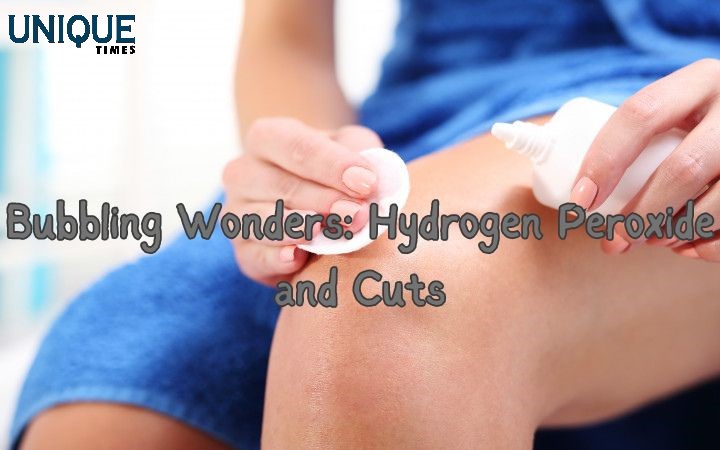Fizz and Foam: Unraveling the Mystery of Hydrogen Peroxide Bubbles on Cuts

Hydrogen peroxide, a common household antiseptic, takes on a fascinating role when applied to cuts and wounds. The effervescent display of bubbles that ensues has intrigued many. Let’s delve into the science behind why hydrogen peroxide bubbles when it meets an open wound, unveiling the captivating process that occurs on the microscopic stage.
1. Chemical Composition: Hydrogen peroxide, with the chemical formula H2O2, is a compound made up of two hydrogen atoms and two oxygen atoms. It is a pale blue liquid that appears similar to water but contains an extra oxygen molecule.
2. Enzymatic Reaction: When hydrogen peroxide comes into contact with an open wound, it encounters an enzyme present in the cells called catalase. Catalase is naturally produced in the cells to break down hydrogen peroxide into water and oxygen.
3. Breaking Down Hydrogen Peroxide: The catalase enzyme facilitates the decomposition of hydrogen peroxide into water (H2O) and oxygen (O2). This process is represented by the following equation:
2 H2O2 → 2 H2O + O2
4. Oxygen Release: The liberation of oxygen gas during this decomposition is what gives rise to the effervescence or bubbling effect. The oxygen gas escapes from the solution in the form of bubbles.
5. Antimicrobial Action: Apart from its bubbling effect, the release of oxygen also contributes to the antimicrobial properties of hydrogen peroxide. Oxygen helps create an environment that is less favorable for the growth of certain bacteria, aiding in the cleaning and disinfection of the wound.
6. Visual Cue for Cleansing: The bubbling action serves as a visible cue that the hydrogen peroxide is actively interacting with the wound. It helps users identify that the solution is in contact with the affected area and carrying out its role in cleansing and disinfecting.
7. Temporary Stinging Sensation: Some individuals may experience a temporary stinging sensation when hydrogen peroxide is applied to a wound. This sensation is often attributed to the release of oxygen gas and the effervescent action on the injured tissue.
In conclusion, the bubbling phenomenon when hydrogen peroxide is applied to a cut is a result of a fascinating enzymatic reaction. Understanding the science behind this process not only demystifies the visual spectacle but also underscores the compound’s role in wound care and disinfection.
Picture Courtesy: Google/images are subject to copyright








